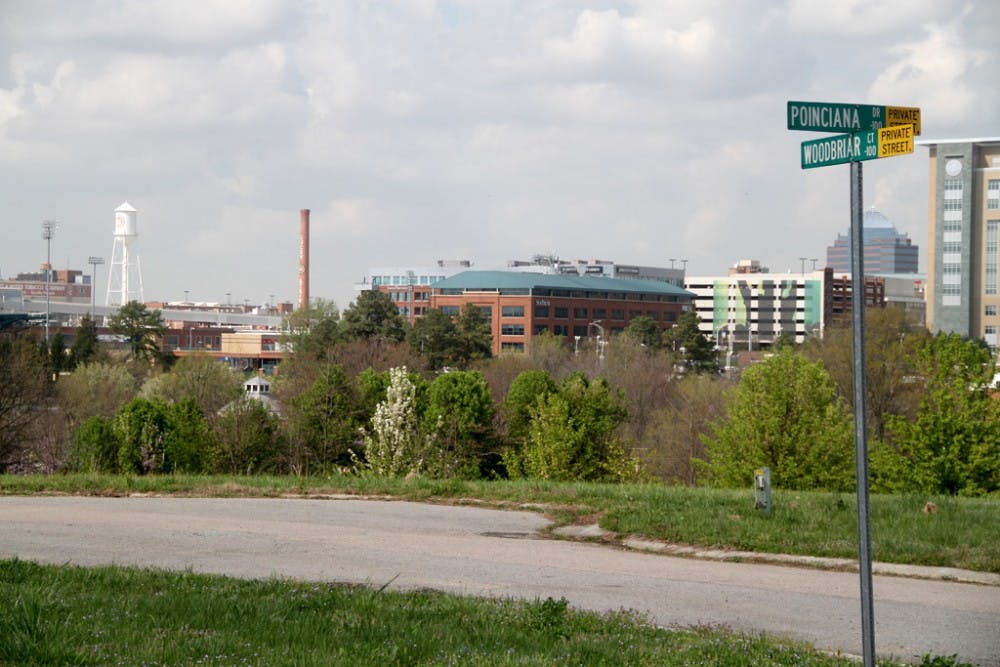A new program will provide up to $750 of tax relief to qualifying homeowners.
The Durham County Department of Social Services in partnership with the Durham County Tax Office launched the Low-Income Homeowners Relief Program on Wednesday.
“We really want to try and retain our homeowners here in Durham and not have them move because the taxes are just so high for our property right now,” said Janeen Gordon, assistant director for Durham County aging & adult services.
Gentrification’s impact in Durham
Property values have been rising in Durham in recent years, attracting wealthier people to the area and raising property taxes. The median sale price for homes sold in Durham increased by over 50% between mid-2010 and October 2019.
This process of gentrification results in the displacement of lower-income residents and is phasing out the legacy Black neighborhoods which have been in Durham for many years.
Gentrification was particularly a concern when Duke juniors and seniors were denied on-campus housing for the fall 2020 semester. The decision worried affordable housing experts that landlords could raise rent and evict low-income tenants in favor of renting to frantic students in search of off-campus housing.
The Centers for Disease Control and Prevention’s eviction moratorium ended Aug. 26, and landlords have now begun to evict tenants for non-payment of rent as well. The LIHR aims to combat this by making it easier for long-time, low-income property owners in Durham to pay their tax bill.
“Gentrification is real in this city, and we just want to make sure that we’re sensitive to those homeowners who have been here for a really long time,” Gordon said.
In the past 20 years, downtown Durham became 51% more white, according to the U.S. Census. Further, only 29% of Black residents and 33% of Hispanic and Latinx residents own their homes, according to the 2014-2018 County Health Report.
According to the Durham Herald Sun, five of Durham County’s 60 census tracts have gentrified, including parts of Cleveland-Holloway, West End, Walltown and Old West Durham. Thirteen other tracts have “gentrification potential.”
How the grant will work
In order to qualify for the program, homeowners must have an income below 30% of the Area Median Income, have held primary residence in their property for at least 10 years and have not been receiving other property tax assistance, among other requirements.
The LIHR grant will be awarded annually on a first-come, first-serve basis and will be equal to 50% of the Durham County 2020-21 fiscal year tax bill, not to exceed $750.
“We are hopeful because we continue to receive phone calls about the program,” Gordon said. “Right now, we are only taking applications through our online application tool, [but] shortly we will start to have phone applications as well. It’s important that people have multiple ways to apply for this particular program.”
The program is only for the 2021 tax year, where taxes are due Jan. 5, 2022. The program will close on Dec. 31, 2021.
After processing all the applications, the corresponding payments will be made to the tax department on behalf of the individuals who were eligible and applied. The pilot program will then be reassessed for future tax years.
Get The Chronicle straight to your inbox
Sign up for our weekly newsletter. Cancel at any time.

Jazper Lu is a Trinity senior and centennial/elections editor for The Chronicle's 120th volume. He was previously managing editor for Volume 119.

